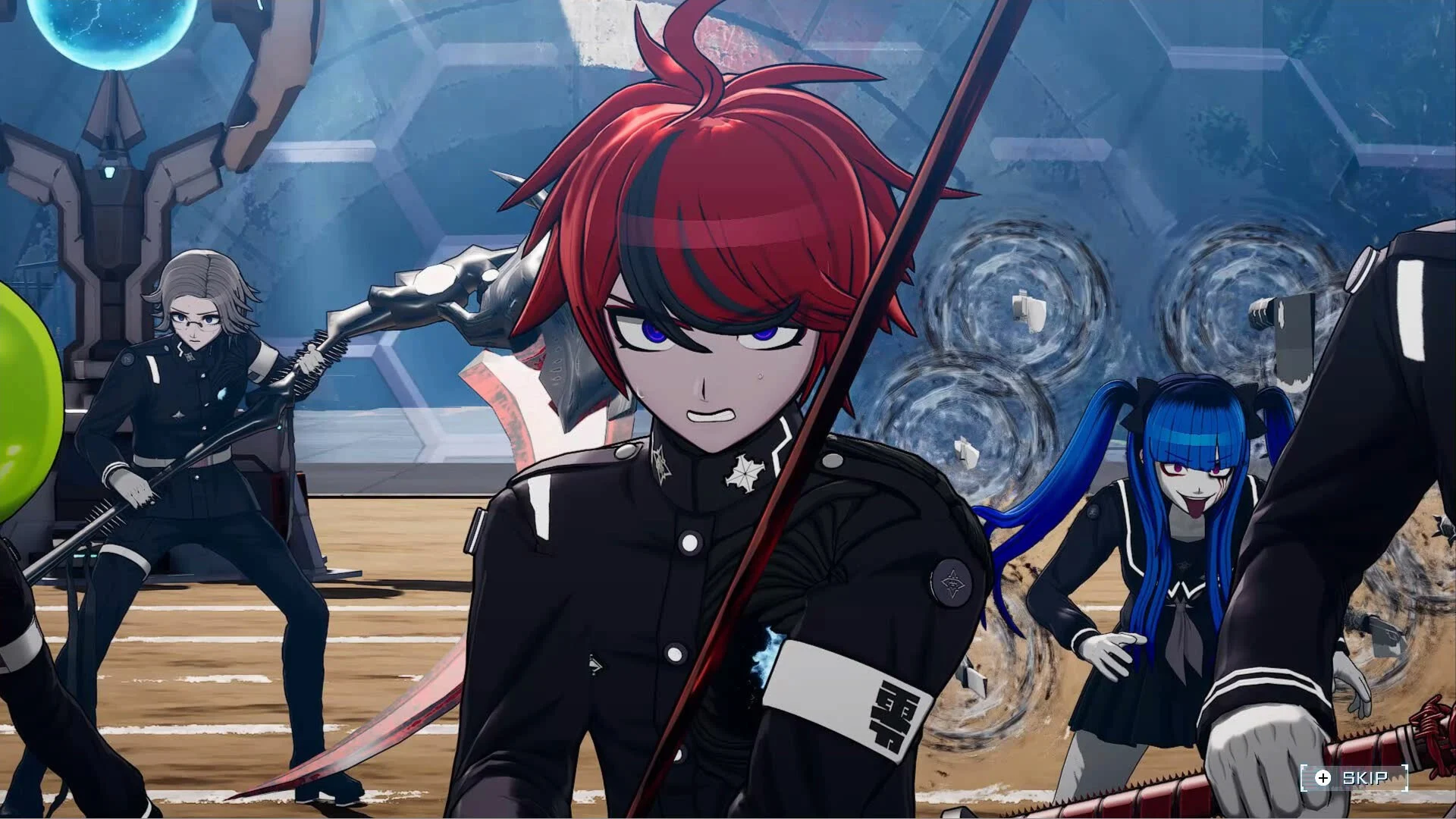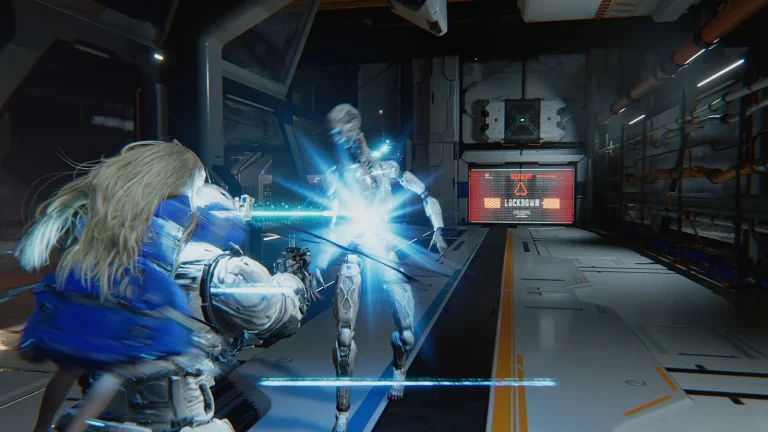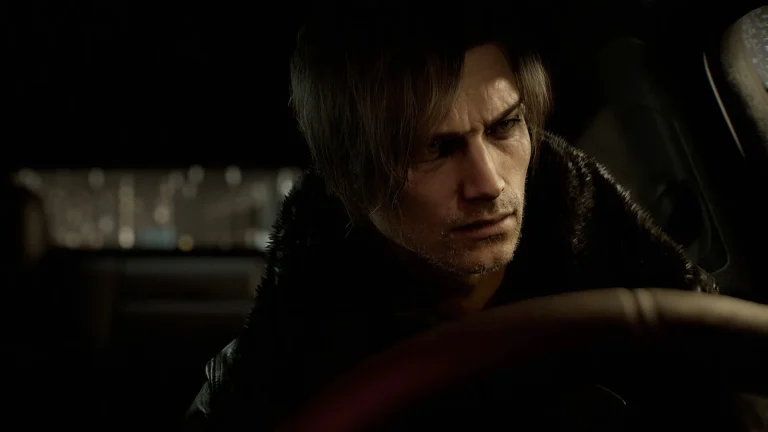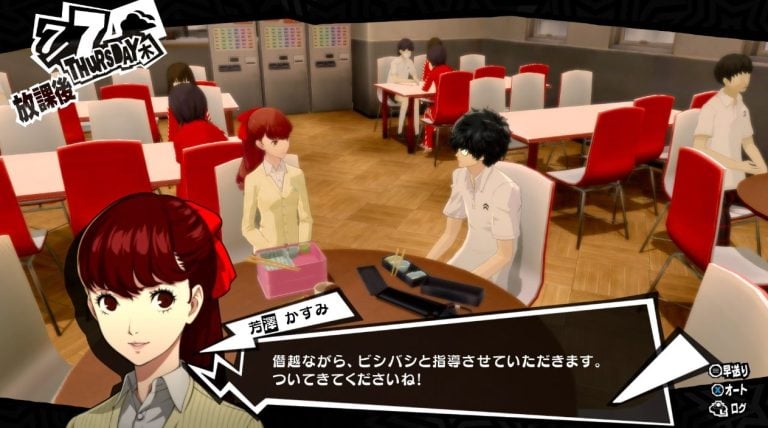The Hundred Line: Last Defense Academy is a story-driven tactical RPG designed by Too Kyo Games, developed by Media.Vision and published by Aniplex. Launching on April 24, the game brings together the minds behind Danganronpa and Zero Escape – Kazutaka Kodaka and Kotaro Uchikoshi respectively – who promise to deliver a signature blend of “extreme” and “despair.”
Set in the mysterious Last Defense Academy, the game drops you into a 100-day survival mission alongside a cast of 15 eccentric boys and girls. With talk of the devs risking their livelihoods for the game and making literally 100 full-fledged endings for it, the title has been turning heads even before release. Ahead of launch, AUTOMATON caught up with Kodaka and Uchikoshi to dive into how The Hundred Line came to be, what went into its creation, and what the creator’s end goal was with this ambitious project.
We needed people to look at our game and think “These developers are out of their minds”
―Please introduce yourselves and tell me about your respective roles in The Hundred Line.
Kazutaka Kodaka (hereafter Kodaka):
I’m Kodaka of Too Kyo Games. I was the director and scenario writer for The Hundred Line, and as CEO of the company, I also handled the financial side of things, like raising funds.
Kotaro Uchikoshi (hereafter Uchikoshi):
I’m Uchikoshi, The Hundred Line’s route scenario writer and director. You can read the details about my involvement on our development blog, but basically, I was in charge of the 99 routes in the game other than the “true route” written by Kodaka.
―How would you describe The Hundred Line? What kind of game is it?
Kodaka:
The story follows 15 students trapped inside the Last Defense Academy, where they must survive for 100 days while battling mysterious enemies known as Invaders. It’s a fusion of an adventure game and a tactical RPG, but at its core, it’s a story-driven experience. Each day brings new problems, and as the days pass, the overarching mystery deepens and begins to unravel.
―Tell me about The Hundred Line’s concept.
Kodaka:
It’s hard to define a singular concept behind The Hundred Line, but when I set out to create a brand-new IP, the first thing that came to mind was making something truly insane. With so many high-quality titles coming out of North America and China these days, I felt that unless our game made people stop and go, “These developers are out of their minds,” we wouldn’t even stand a chance. So from the beginning, my goal was to overwhelm players with both the quantity and quality of what we do best: story and 2D graphics.
―When did development start in earnest?
Kodaka:
The Hundred Line actually originated from a project that Uchikoshi and I started working on right after we founded Too Kyo Games. Unfortunately, that initial project ended up falling through, and this game is a reconstruction of that scrapped idea. We started completely rebuilding it in earnest around 2020, so it’s taken us about five years to finally unveil it. That said, from the moment we restarted the project, we were dead set on delivering a story with an insane amount of content and branching paths, no matter what.
―I feel like with the market being so saturated nowadays, players tend to value titles with a unique punch over mass-produced content. It’s interesting that you had that kind of perspective way back in 2020.
Kodaka:
I’ve always felt that the strength of Japanese games lies “on a different axis” from AAA-scale production. Games that have a strong sense of individuality, like those from the PS1 or PS2 era, feel very “Japanese” to me. Back in 2020, one of the titles I really looked up to was Vanillaware’s 13 Sentinels: Aegis Rim. The sheer quality and volume of the graphics felt truly “insane” in the best sense. Seeing games in that lane succeed really got me thinking deeply about what it would take to compete with a brand-new IP.
―So for you, the “Japanese-ness” of Japanese games lies in expressing individuality.
Kodaka:
Nowadays, game development is becoming “product-driven,” but for Japanese games like ours to survive, I think we have to go in the opposite direction from what’s happening overseas by doubling down on the creator-driven approach – like what you see in Uchikoshi’s and my own work. I’d really like to demonstrate that with The Hundred Line.
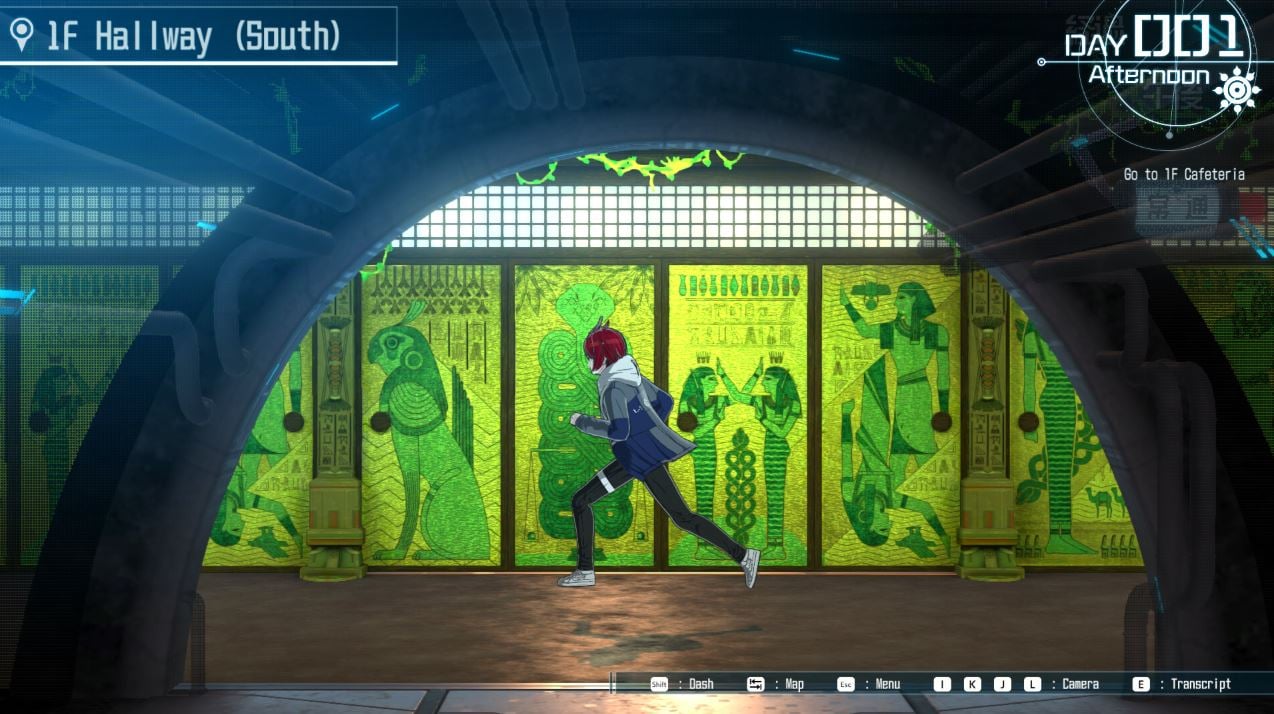
―The Hundred Line certainly feels like an example of extremely creator/personality-driven game development. Where does your dedication and all this conviction come from?
Kodaka:
In the past, I was essentially only doing contract work and getting paid for it, which also meant that I didn’t have to worry too much about things like budgets. But with The Hundred Line, we’re talking about an extraordinary volume of content, with one hundred routes. Frankly, if I were still an employee at a company and submitted a proposal like this to a publisher, it probably wouldn’t have made it past the approval stage.
However, no matter how challenging or ambitious the idea was, I felt this was a game we had to make. That’s why, even though we eventually partnered with Aniplex, we initially started development using only Too Kyo Games’ own money. While I’ve always approached my games with strong commitment as a creator, this time I really bet everything – both mentally and financially – and I think that’s reflected in the quality and dedication behind the game.
―It sounds like you’ve been working on The Hundred Line without a break and putting your life on the line for it. I’m curious about what drives you to take on that level of risk?
Kodaka:
I wonder myself (laughs). But as long as you’re just living a normal life, you don’t really get to encounter many high-risk, high-return moments, do you? Maybe that’s why, as a creator, I wanted to bet everything – my skills, money – on a simple “battle.” If the game I make by putting everything on the line turns out good, I win. If it’s boring, then I lose.
Of course, I’m not saying our employees need to bet everything the way Uchikoshi and I do, but since we are executives, we don’t have to worry about overtime or anything like that, we can just keep working as much as it takes to get the results we’re satisfied with.
—That’s definitely not a very “Reiwa-era” statement (laughs). But I feel like that madness seeping out of The Hundred Line – a result of all the risks Too Kyo Games is taking – is precisely what gives the game its identity. I’ve been playing it myself, and you can really feel a sense of urgency in the game.
Kodaka:
(laughs) Yeah, that might be true. When I played the finished game, I remember genuinely thinking “It was worth taking the risk to make something like this.” I think we’ve created a title that every member of the team can stand behind and be proud of.
―How was working on The Hundred Line for you, Uchikoshi-san?
Uchikoshi:
I feel the same, it was absolutely worth making. I think that AI will start to play a big role in game development going forward, but I’d like to mention thar we didn’t use AI at all for the The Hundred Line’s scenario. Given the sheer volume of writing we’ve produced by hand, I really think this could go down in game history.
―Considering how much effort you’ve put into the game, were you relieved to see the demo getting such positive responses?
Uchikoshi:
It was a huge relief. But to be honest, the parts of the scenario I wrote don’t actually come up in the demo, so I’m also impatient for everyone to finally play the full release (laughs).
We scrapped and remade the TRPG sections over and over
―What were your goals when it comes to The Hundred Line’s gameplay?
Kodaka:
My ideal game is one that fuses story and gameplay, rather than a fully narrative-heavy experience like visual novels. The Hundred Line achieves that ideal the most among my works for far, with the setting and game system fully intertwined. I think the respective “weights” of the story and gameplay turned out balanced and synchronized throughout.
―Given that your past titles were mostly foucsed on adventure game-style mechanics, why did you decide to go for tactical RPG gameplay?
Kodaka:
Even if you add battles that are fun on their own, it’s meaningless if they feel disconnected from the story. That’s why when we started development, I said I wanted TRPG mechanics that will serve the story and play a role in livening up the narrative. And unlike a mystery scenario where you’re solving a murder, The Hundred Line’s battle-focused story gave us the freedom to create a broader variety of situations than in past titles.
―So the inclusion of TRPG gameplay was decided from the start?
Kodaka:
Yes, I wanted to translate the story’s concept of “defending the academy” into a tower defense-like experience, and I also wanted to make it so that all 15 students can go into battle together, not just one at a time. From there, I thought that the only battle system that could realistically support both of those ideas was a TRPG.
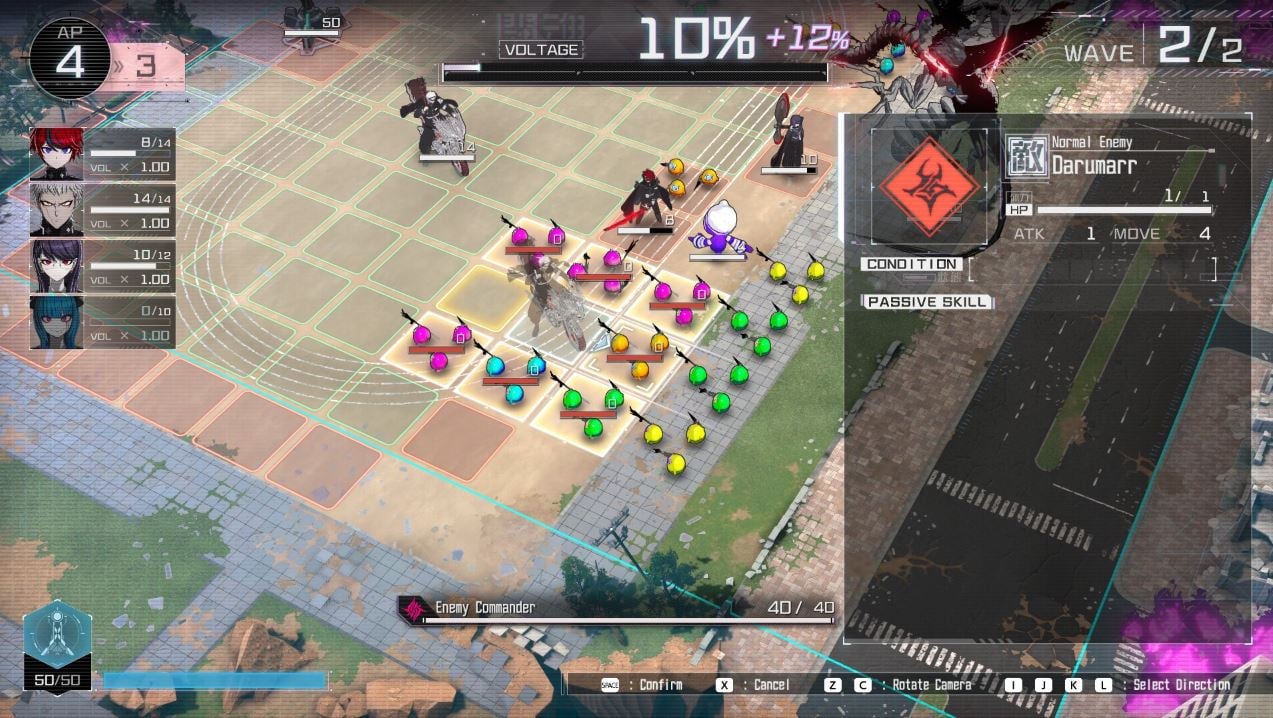
―Given that it was Too Kyo Games’ first attempt at the genre, did you encounter any difficulties?
Uchikoshi:
I wasn’t in charge of the TRPG parts directly, but from the sidelines, I saw how many times they had to rebuild everything, and I could tell it was rough. There were times when I test-played it and found everything great, but Kodaka still wasn’t satisfied. He kept going through cycles of scrapping and rebuilding things. Watching his process, I couldn’t help thinking, “Maybe this is the secret to creating a hit game.” (laughs)
―What was it that wasn’t sitting right with you, Kodaka-san?
Kodaka:
I had a vague sense that the battles didn’t feel emotionally engaging enough. To put it more specifically, the path to clearing a stage felt too much like solving a puzzle, and that made the battles come off as mechanical. So we reworked things to allow players more freedom in creating strategies. I also wanted to distance the gameplay from existing TRPGs as much as possible.
―There’s no leveling system in The Hundred Line, and the numbers you deal with remain relatively small throughout. Compared to other titles in the genre, I really liked how, even in the later stages, the battles don’t become bloated.
Kodaka:
The reason why we didn’t go for leveling is simple – since there are 100 routes, the number of battles is ridiculous, and if character growth were to happen outside of battles, balancing everything across the whole game would’ve been nearly impossible. That’s why we made sure character growth is fully contained within battles, using things like the Boost Hemoanima and Voltage mechanics. Outside of battle, you can acquire new skills as the story progresses, but that’s more about adding variety. It was Media.Vision that helped us come up with a way to turn the constraint of having 100 routes into a strength.
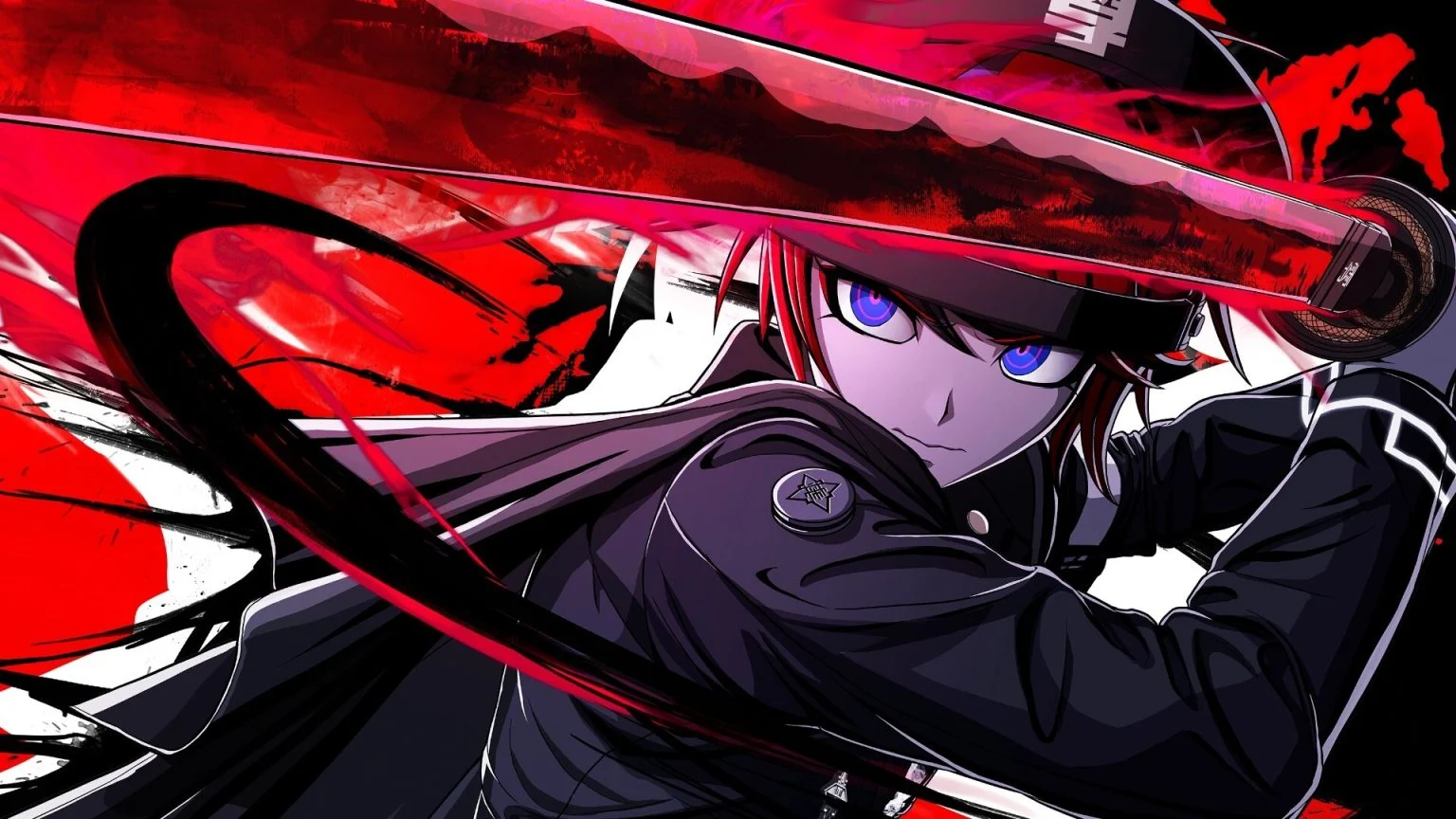
―It sounds like Media.Vision played a big role in The Hundred Line’s TRPG parts.
Kodaka:
That’s right. After Too Kyo Games decided on all the specs and situations that needed to be included in the battles – like how it’s okay for the characters to die, we left it to Media.Vision to figure out how to turn all those elements into an interesting TRPG. As a result, we were able to incorporate ideas true to The Hundred Line’s setting – like the suicidal ultimates the characters can unleash before dying – into the game system itself. I think we ended up with something so entertaining that it’s hard to tell whether the story or the battles will dominate the game.
―What made you approach Media.Vision for The Hundred Line in the first place?
Kodaka:
Actually, Media.Vision was involved in that initial collaborative project between me and Uchikoshi that got scrapped. So when we decided to rebuild that into The Hundred Line, I reached out and asked them to work together with us again.
―So you already had some history with them. After working with them on The Hundred Line, where do you feel Media.Vision’s strengths lie?
Kodaka:
We already knew they had a strong track record with TRPGs, having developed the Valkyria Chronicles series, but honestly, The Hundred Line’s battle system turned out the way it did all thanks to Media.Vision.
Uchikoshi:
I feel like they’re truly a group of “craftsmen.” They never said no to anything we requested and entertained even our most unreasonable demands. I got the impression that they carry deep pride in what they do – they’re the kind of developers who would never release a half-baked game. For example, when we were about to decide on the length of the debugging period based on our own standards, they told us, “We can’t release this to the world with only that much time.” Thanks to that, the final game reached a very high level of quality. They’re a fantastic company.
―I think your description of them being like a group of craftsmen is very fitting.
Kodaka:
Yes, I feel like they’re very “Japanese” creators too, but in a different way than us – they’re craftsmen who haven’t been “automated.” The Hundred Line was their first console game in a while, and with TRPGs not being made so often these days, I think they were very motivated to make this project truly great.
The big question – did Kodaka and Uchikoshi get along while working together?
―This is the first time you and Uchikoshi-san have written a scenario together. Did you encounter any difficulties?
Kodaka:
Our illustrator Komatsuzaki Rui and composer Masafumi Takada are both individuals with very strong quirks, and I’m the type who actively adopts other people’s ideas if I find them interesting. So I personally don’t have any trouble working with creators who are particular about their work.
―As a scenario writer yourself, was it difficult for you to write under Kodaka-san’s direction? (to Uchikoshi)
Uchikoshi:
We get asked about whether we “clashed as creators” a lot in interviews, but we really didn’t. Although, to be honest, we did have a huge argument in the early days of the project that was completely unrelated to the game, but let’s set that aside for now (laughs). Basically, we made a clear division of labor for The Hundred Line’s scenario.
Kodaka:
Since we understand each other’s writing styles well, I think a big part of us working together successfully was that we never asked the other person to do something that’s completely off target for them in the first place.
―It’s easy to imagine strong creative personalities clashing when attempting to work together, but I see you were able to split the work without issues.
Kodaka:
I think it was The Hundred Line’s massive scenario and the fact that we divided our roles – myself for the main route, Uchikoshi for the 99 routes – that allowed us to approach it with an “I’ll write my own part myself” kind of mindset. If we’re both working on the same game, it feels ideal to have clearly separated parts where each of us can bring out 100% of our strengths. On the other hand, if we were both trying to co-write a single scenario, it might’ve been more difficult. Inevitably, one writer’s style would end up dominating.
Uchikoshi:
If I were younger, I probably would’ve been more like, “I want this! I want that!” But I think we’ve both mellowed with age. Although, from the readers’ perspective, it might be more exciting if we said, “We wrote the scenario while going at each other’s throats!” (laughs)
―Would it…? (laughs)
Kodaka:
To be honest, I didn’t even read Uchikoshi’s parts of the scenario until the game was finished. Once debugging was over and we couldn’t make changes to the foundation of the game anymore, that’s when I finally read his sections, and I simply enjoyed them in the same way any other player would.
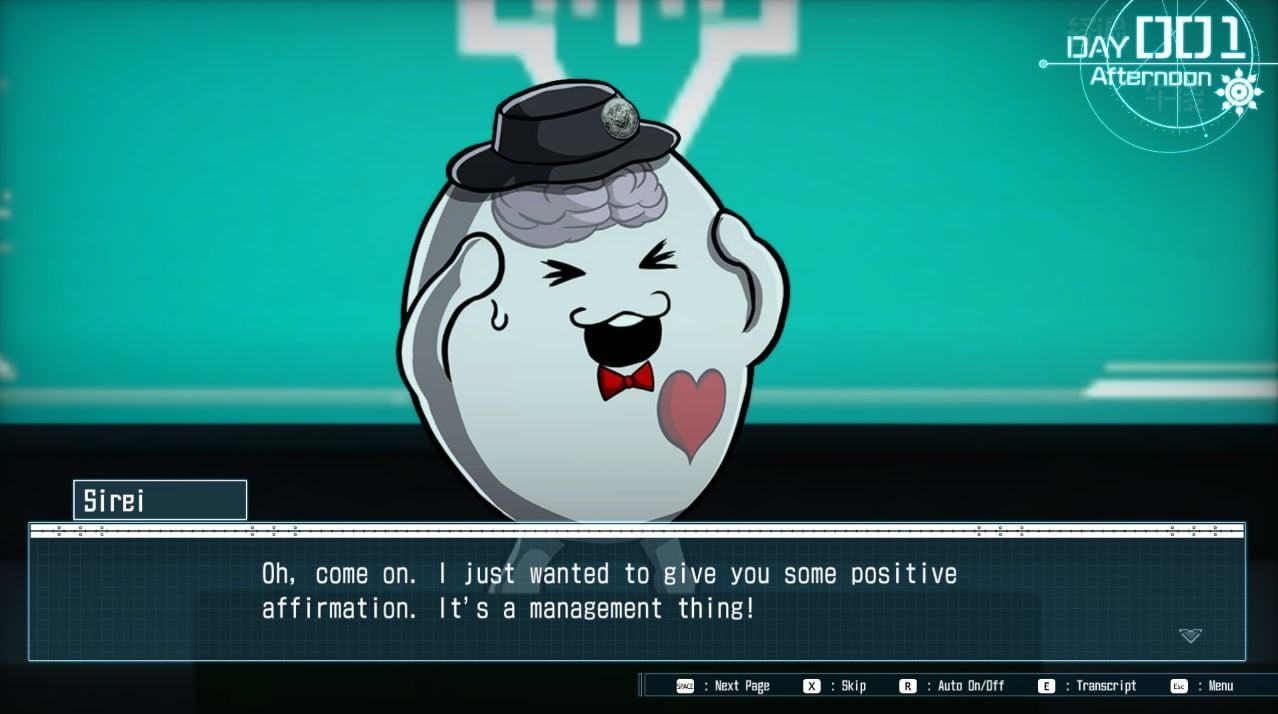
―You just left the 99 routes entirely to him till the end!?
Kodaka:
Of course, I did receive the plot for the routes early in development, so I knew the overall structure. But I didn’t know the finer details. During voice recording, there were moments when I went like, “Wait, I don’t know this word” (laughs). But it all clicked when I actually played them. I figured as long as Uchikoshi’s distinct style came through, everything would be fine. I instructed him from the start of the project to freely express his “Uchikoshi-isms,” and I didn’t check up on his work because I trusted him.
―It sounds like you have a respectful and healthy working relationship.
Uchikoshi:
What Kodaka says is true, but I will mention that every time he made a change to the main route, I had to reflect that across the remaining 99 routes, which was a huge pain (laughs). That said, in terms of compatibility, Kodaka is definitely more of a sadist, and I’m a bit of a masochist, so as a writer, being pushed into a corner with unreasonable demands kind of fired me up. I’d grumble about having to correct things, but I also enjoyed it.
―Another thing the two of you seem to have in common is how often you interact with fans on social media. Do you ever find all that feedback to be a hindrance to you as creators?
Uchikoshi:
I generally don’t look myself up online, so I only check out posts where I’m directly mentioned. Luckily, there aren’t many aggressive users around me and it’s pretty peaceful. On a separate note, I sometimes come across posts about certain incidents that leave me feeling kind of hollow, and I find myself wondering if there’s a growing gap between my own values and those of the people using social media.
Kodaka:
Personally, I treat it more like interacting with customers than engaging with fans. I accept any kind of feedback coming from users, so I don’t really mind if someone dislikes me or insults me. I use social media more as a platform to get more people to discover our games than for personal interactions. That said, I’ve personally noticed that tendencies among social media users seem to have shifted lately. More people are using it in one of three ways: making off-the-wall statements, venting daily frustrations, or like us – for promotional purposes.
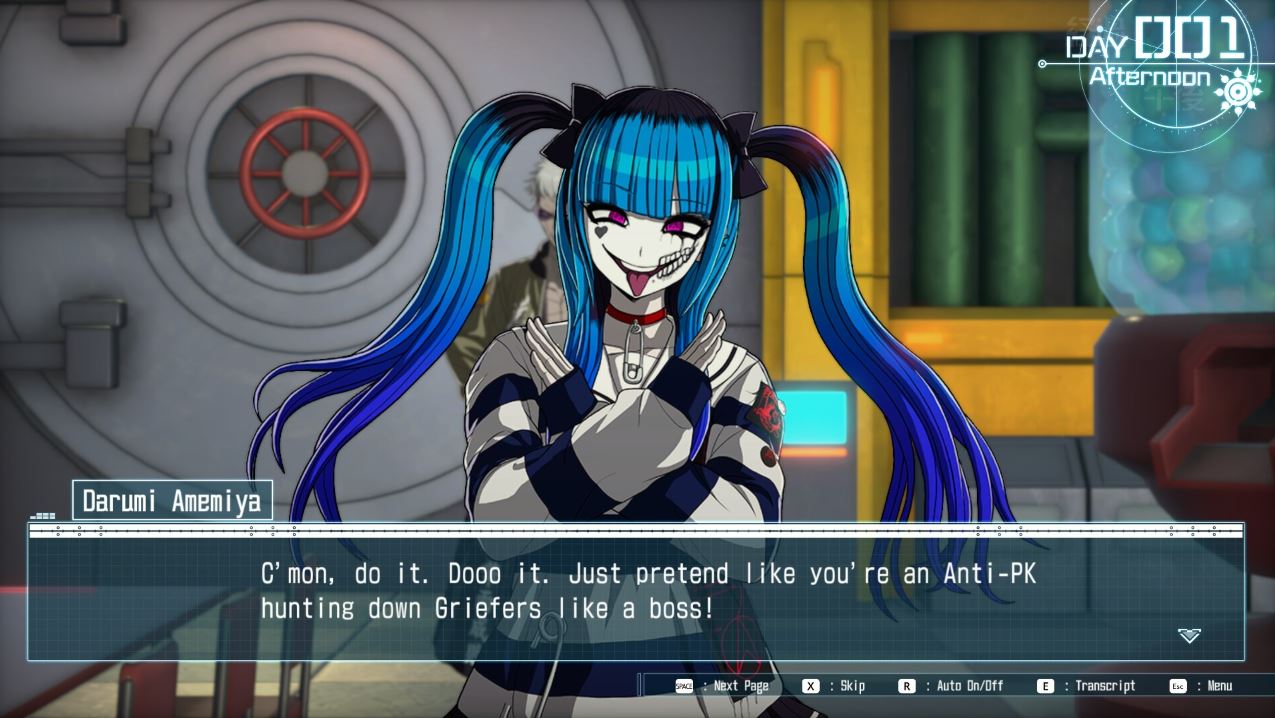
―Both of you create works with some pretty unhinged characters, but I feel like social media users might have you beat lately in that field.
Kodaka:
It’s bad for business, really (laughs). There are times when I consider quitting social media, and if I didn’t need it for promotion, I probably wouldn’t still be on there. I feel like people around the world are slowly starting to realize the limitations of social media.
―I believe you also interact with users outside Japan a good deal. How has the global response to The Hundred Line been like so far?
Kodaka:
We’ve definitely had a bigger response from Japanese users, but the proportion of overseas users feels larger than we initially expected. Also, a lot of the reactions to our posts about how Too Kyo Games may go bankrupt from The Hundred Line’s development have tended to come from Western fans.
―Do you actively check out reactions from Western audiences too?
Kodaka:
Like Uchikoshi, I mostly just read the posts that mention me directly. Among the reactions to the demo, there were many Western players who mentioned being unfamiliar with TRPGs and feeling intimidated at first, but loving it after they tried it, which made me happy. But honestly, the nature of the reactions we get doesn’t really differ that much from country to country, so perhaps one of the strengths of adventure games like The Hundred Line is that they can be enjoyed in the same way regardless of where you’re from.
―Lastly, could you tell me about your future plans?
Kodaka:
I feel like I’ve accomplished everything I set out to do in The Hundred Line, so I’m not thinking about my next project just yet. My job right now is to get as many people as possible to pick up the game. Up until now, I didn’t really involve myself much in promotion after a game was finished, but since I’m the president of Too Kyo Games and all, I want to make sure The Hundred Line gets sent out into the world properly. Once everything has settled down, I might start thinking about my next project, but for now, even I don’t know what that’ll be.
―How about you, Uchikoshi-san?
Uchikoshi:
I have a request for everyone who decides to buy The Hundred Line. You don’t need to play all 100 routes, but for the hardcore fans out there – I encourage you to experience every single route and be vocal about which ones you liked. I’m sure there are a lot of people out there who are curious about the game but are waiting to see the general reaction before taking the plunge, so the only way to move them is through word-of-mouth. That’s why, if you’re playing and enjoying The Hundred Line, even just a single post with your thoughts would mean a lot.
Kodaka:
Maybe people’s reactions to The Hundred Line could help cleanse social media (laughs).
―Something tells me there’s gonna be a lot more screaming than peaceful reviews though.
Kodaka:
And that’s perfectly fine too (laughs).
―(laughs) Thank you for your time!
The Hundred Line: Last Defense Academy releases on April 24 for the PC (Steam) and Nintendo Switch.
[Writer, editor: Yuuki Inoue]
[Interviewer, editor: Ayuo Kawase]

